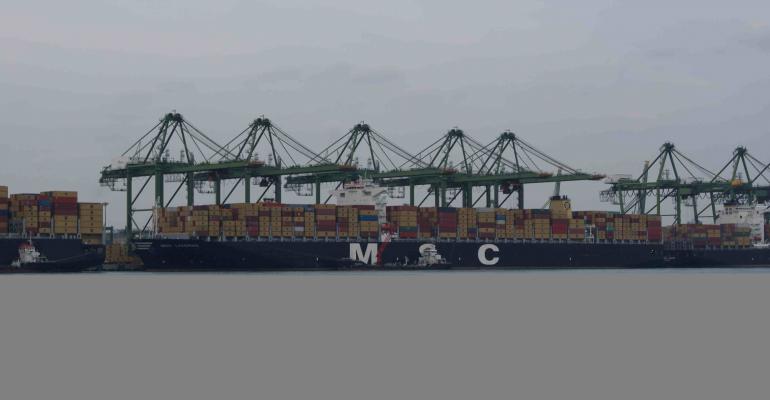This, SeaIntel suggested, would lead to either an ordering spree of such vessels or a feeder shortage. “The larger vessels tend to result in a reduction of service frequency in the major trades to balance supply and demand. This leads to a situation where the networks with lower service frequency will continue to depend on feedering services – potentially even an increased transhipment incidence owing to the lower service frequency,” it highlighted.
Based on the existing fleet and orderbook and on the assumption that the approximately 9% of feeder vessels that will be older than 25 years of age in 2020 are scrapped, SeaIntel calculated that the global fleet will see a reduction in ratio of feeder vessels to large vessels of 5.4 to one large container ship by the end of 2020 compared to 7.9 currently.
Read More: Small boxships halfway there, living on a prayer
In the worst case scenario, the global fleet will see a shortage of 400-1,200 feeder vessels by the end of 2020, SeaIntel estimated. It added however that the upper extreme shortfall figure of 1,200 was unlikely because such a massive shortage will cause TC rates to spike so much that scrapping will cease and also lead to the usage of vessels much too large for the job.
“In conclusion, it appears that whereas the market over time will indeed be able to absorb the new generation of large tonnage, the current orderbook appears far too small as it pertains to feeder tonnage,” SeaIntel concluded.
Read More: SITC orders feeder boxship quarter for $34m apiece
Commenting on the data SeaIntel ceo Alan Murphy said: “It is clear that in the absence of any additional feeder vessel ordering, we will very likely see an increase in the premium for feeder tonnage – and this in turn will place further pressure on the pricing strategies for the carriers, where we will see the pricing spread between direct port-port pairs and transhipment products widen.”
Copyright © 2024. All rights reserved. Seatrade, a trading name of Informa Markets (UK) Limited. Add Seatrade Maritime News to your Google News feed.


